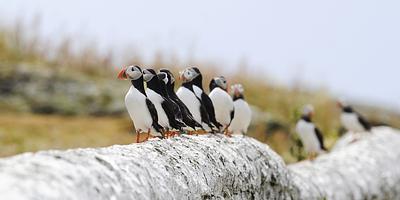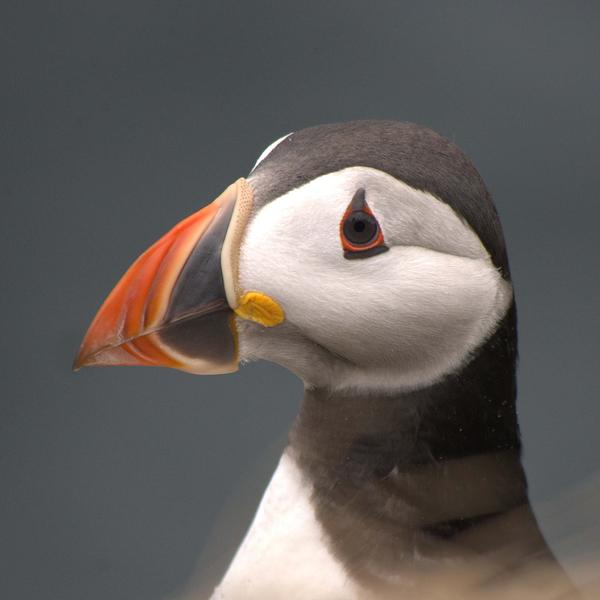
Puffin
Fratercula Arctica (Atlantic puffin)
What do they look like?
Sometimes known as the ‘clown of the sea’, the Atlantic puffin is an iconic seabird.
Puffins are easily identifiable in the summer months by their black and white feathers, brightly coloured beak and orange legs. With fast wingbeats and a distinctive profile, this small seabird can often be spotted flying low over the waves. Puffins feed by diving up to 60 metres from the surface of the water in search of small fish such as herring, hake and sand eels.
When can I see them in Scotland?
March – August
Where can I see them in Scotland?
Puffins can be seen at a number of locations around the Scottish coast, including the Isle of May, Fidra, Craigleith, St Kilda, Orkney and Shetland. In the breeding season they gather at nesting sites (puffinries), which are usually burrows located on grassy clifftops. Puffins spend the winter months at sea.
Find out more in our blog: Where to See Puffins in Scotland
Conservation Status:
In the UK, bird species with breeding, passage or wintering populations are assessed by experts and assigned to the Red, Amber or Green lists of conservation concern. Atlantic puffins are currently a ‘RED’ listed species.
Atlantic puffins are also listed as ‘vulnerable’ on the global IUCN Red List of Threatened Species.


